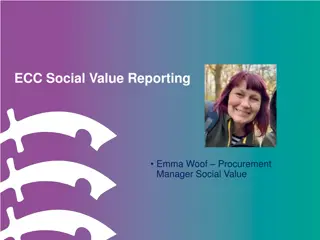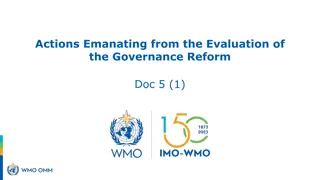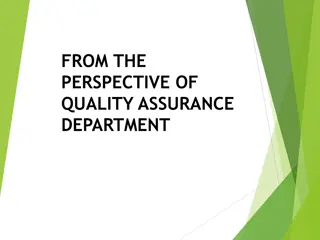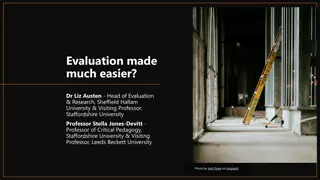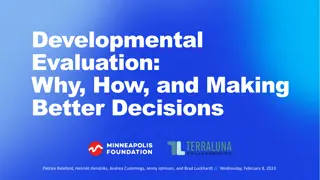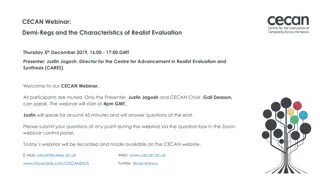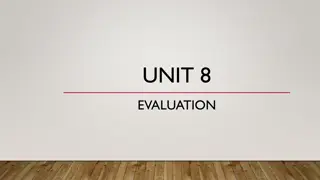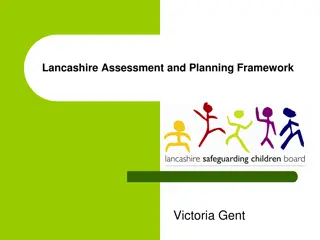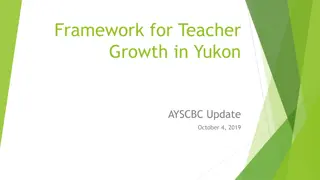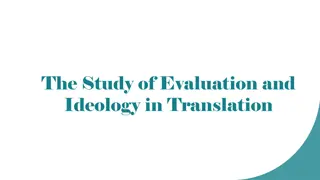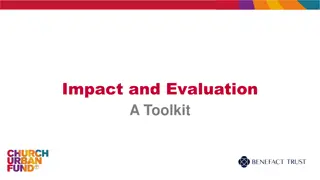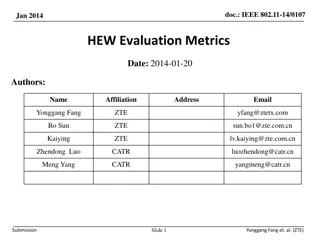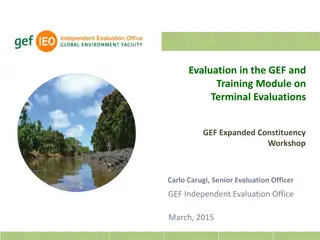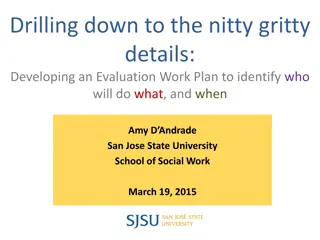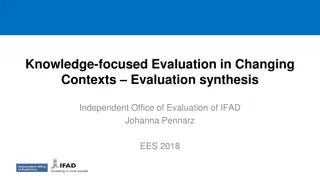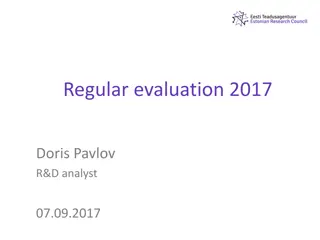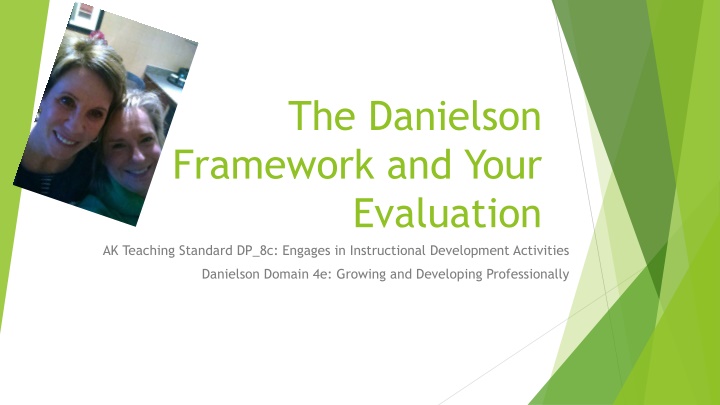
The Danielson Framework for Professional Growth
Explore the Danielson Framework, a tool for teacher evaluation and professional development. Learn about its components, evaluation process, and how to provide evidence for growth. Gain confidence in engaging in instructional dialogue and moving forward professionally.
Download Presentation

Please find below an Image/Link to download the presentation.
The content on the website is provided AS IS for your information and personal use only. It may not be sold, licensed, or shared on other websites without obtaining consent from the author. If you encounter any issues during the download, it is possible that the publisher has removed the file from their server.
You are allowed to download the files provided on this website for personal or commercial use, subject to the condition that they are used lawfully. All files are the property of their respective owners.
The content on the website is provided AS IS for your information and personal use only. It may not be sold, licensed, or shared on other websites without obtaining consent from the author.
E N D
Presentation Transcript
The Danielson Framework and Your Evaluation AK Teaching Standard DP_8c: Engages in Instructional Development Activities Danielson Domain 4e: Growing and Developing Professionally
Tonights Goals: To facilitate an understanding of the Danielson Framework, process, and purpose To build your confidence for engaging in instructional dialogue about the Framework To consider the evaluation process as a tool to promote moving forward professionally To provide an opportunity for you to identify evidence and artifacts in your own practice
Framework, process and purpose Learning Piece 1 The Danielson Framework tool simply defines what teachers should know and be able to do in the exercise of their profession. The complex art of teaching is divided into 22 components clustered into the 4 domains. Each component defines a distinct aspect of a domain.
Framework, process and purpose Tally Here:
Confidence Examples of evidence: Use your Framework handout to help you tally the evidence into the correct domain. 1 2 3 4 The teacher greets students by name as they enter the class or during the lesson. 5/27 students have finished an assignment early the teacher assigns a follow-up activity. The teacher has decided to participate in the Expansion Forum on Blackboard and applies their learning professionally. The teacher creates a list of historical fiction novels that will expand her students knowledge of the age of exploration.
Framework, process and purpose Model Evaluation Process 1.Pre- Conference Training 2.Self-Reflection Conference 3.Classroom Walk-Throughs 4.Informal Observations 5.Pre - Observation Conference 6.Formal Observation 7.Post observation Conference 8.Summative Evaluation Conference
Basic Proficient Confidence Justify Some Limited Accurate Clearly Scaffolded Challenging Partially Connects Correct Attempts Uneven Singular Adequate Engages Rarely General Regularly Specific Self-assessment Minimal Ineffective Referenced Partially Rudimentary Inefficient Effective Attempts Culturally-sensitive Cooperation Actively participates Professional inquiry Enhances Contributes
Moving forward professionally Model Evaluation Process 1.Pre- Conference Training 2.Self-Reflection Conference 3.Classroom Walk-Throughs 4.Informal Observations 5.Pre - Observation Conference 6.Formal Observation 7.Post observation Conference 8.Summative Evaluation Conference
Goal Check of Learning Piece 1 To facilitate an understanding of the Danielson Framework, process, and purpose To build your confidence for engaging in instructional dialogue about the Framework To consider the evaluation process as a tool to promote moving forward professionally
Learning Piece 2 To facilitate an understanding of the Danielson Framework, process, and purpose To build your confidence for engaging in instructional dialogue about the Framework To consider the evaluation process as a tool to promote moving forward professionally To provide an opportunity for you to identify evidence and artifacts in your own practice
Evidence from YOUR practice: Use the A tool to type in what s happening in your classroom. Your evidence Domain 1: Planning and Preparation Demonstrating Knowledge of Content and Pedagogy Demonstrating Knowledge of Students Setting Instructional Outcomes Demonstrating Knowledge of Resources Designing Coherent Instruction Designing Student Assessments
Skills in Domain 1 are demonstrated primarily through the plans that teachers prepare to guide their teaching Planning is about design. --Charlotte Danielson
Evidence from YOUR practice: Use the A tool to type in what s happening in your classroom. Your evidence Domain 2: Classroom Environment Creating an Environment of Respect and Rapport Establishing a Culture for Learning Managing Classroom Procedures Managing Student Behavior Organizing Physical Space
Evidence from YOUR practice: Use the A tool to type in what s happening in your classroom. Your evidence Domain 3: Instruction Communicating with Students Using Questioning and Discussion Techniques Engaging Students in Learning Using Assessment in Instruction Demonstrating Flexibility and Responsiveness
Domain 3: Instruction E= Expectations N = New knowledge G= Grouping A= Assessment G= Graphic organizers E= Everyone
Evidence from YOUR practice: Use the A tool to type in what s happening in your classroom. Your evidence Domain 4: Professional Responsibilities Reflecting on Teaching Maintaining Accurate Records Communicating with Families Participating in the Professional Community Growing and Developing Professionally Showing Professionalism
Domain 4: Professional Responsibilities Are you able to assess the effectiveness of your work and take steps to improve it?
Goal Check of Learning Piece 2 To provide an opportunity for you to identify evidence and artifacts in your own practice

